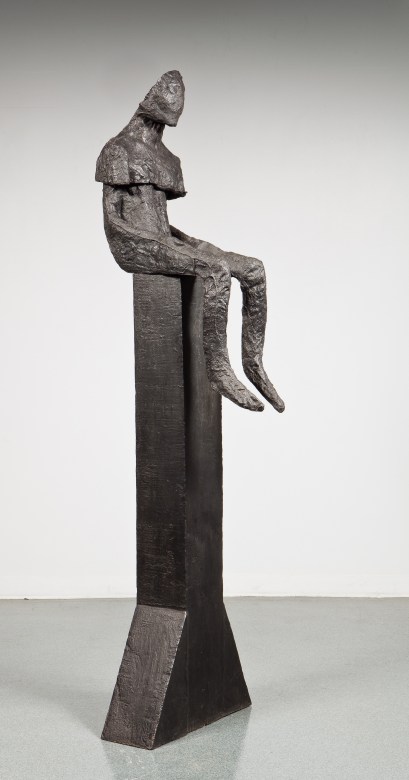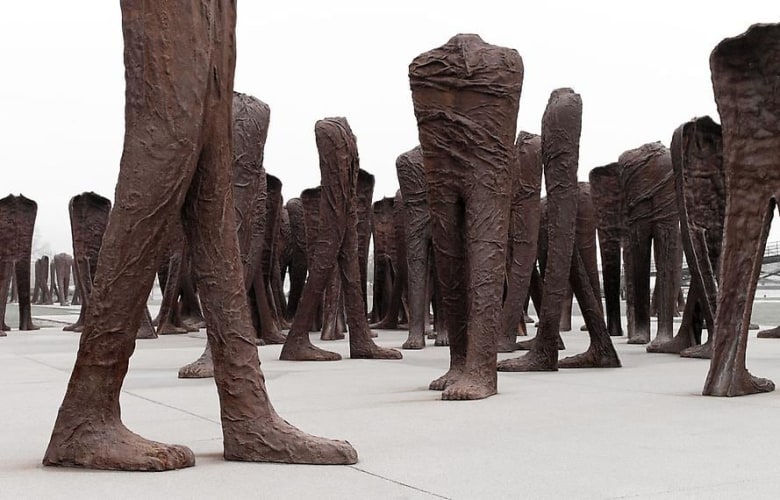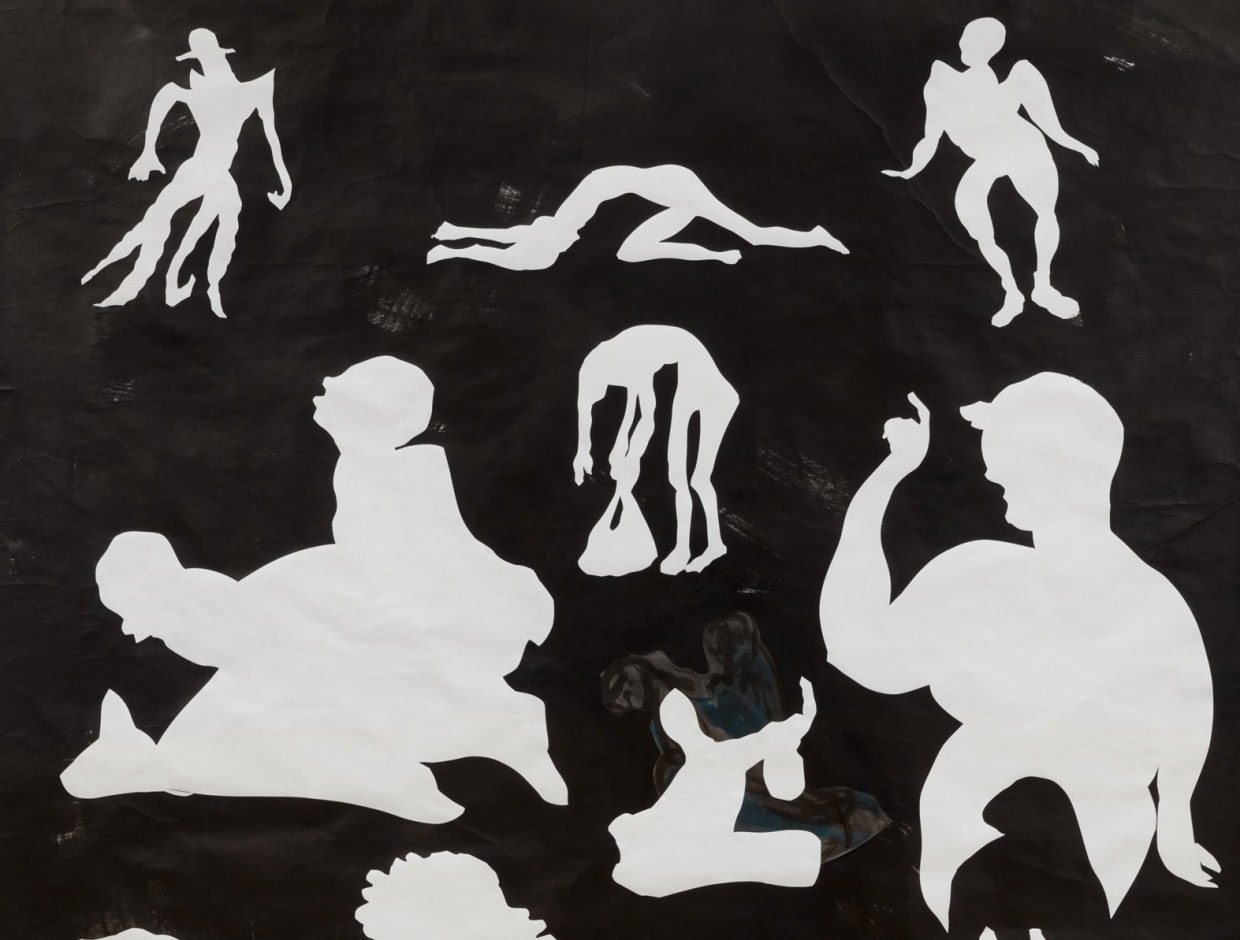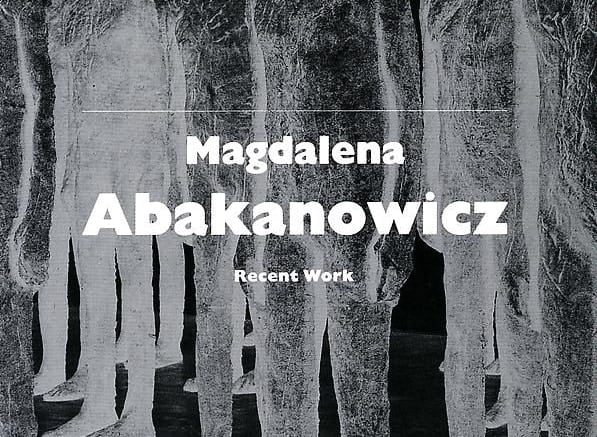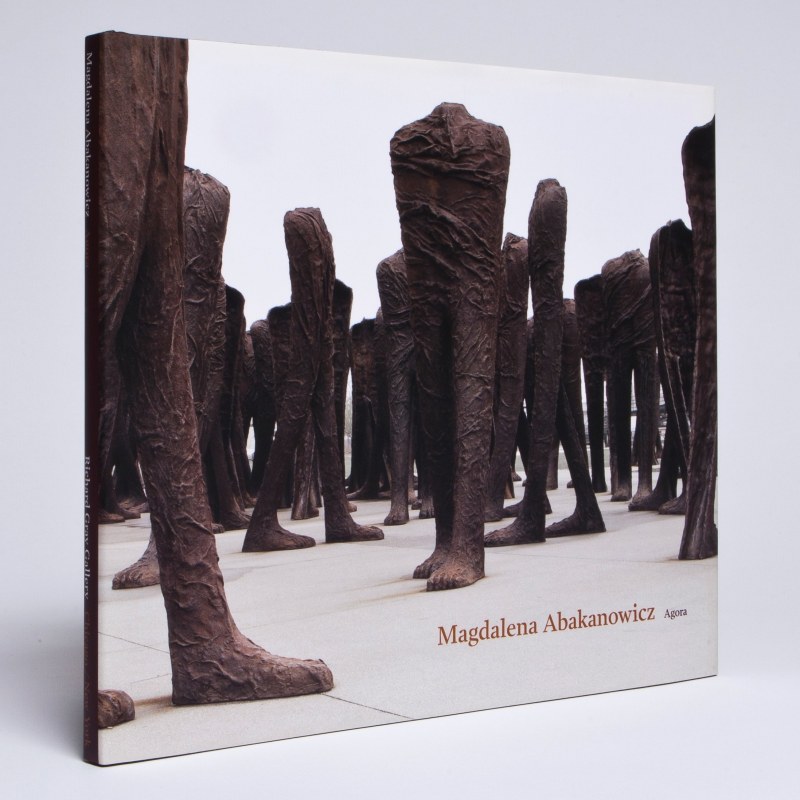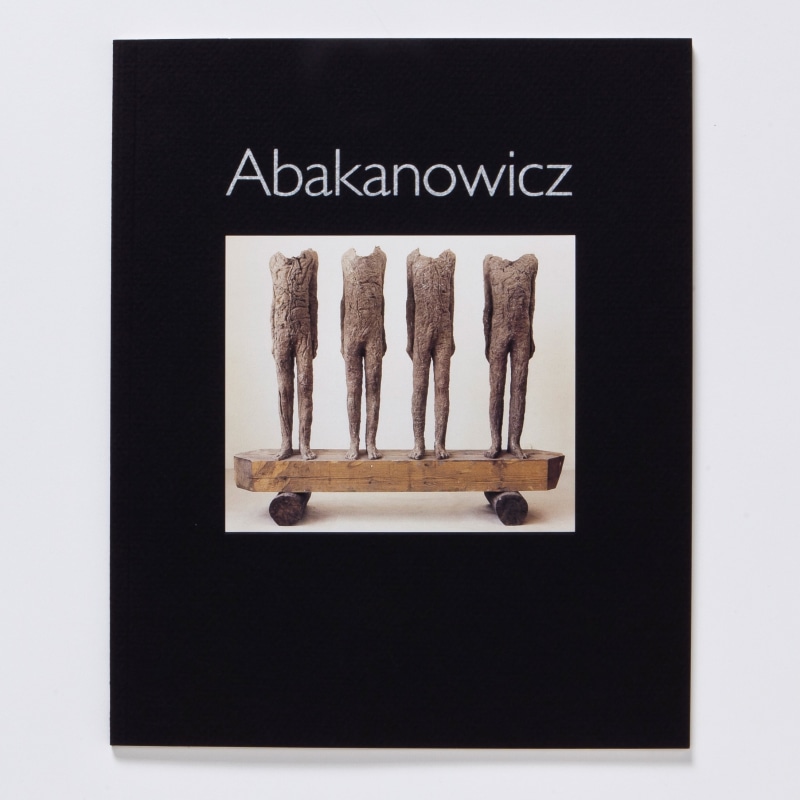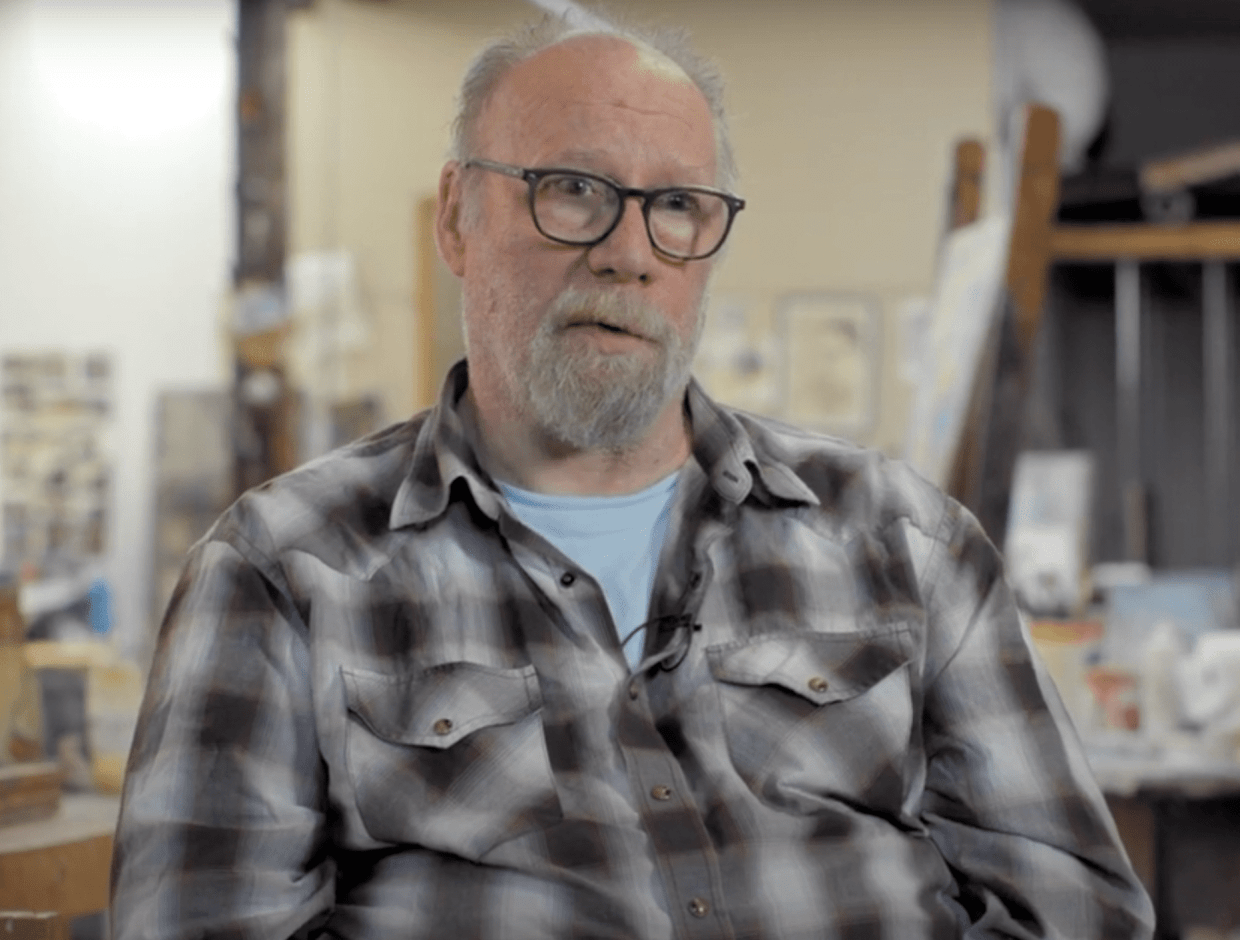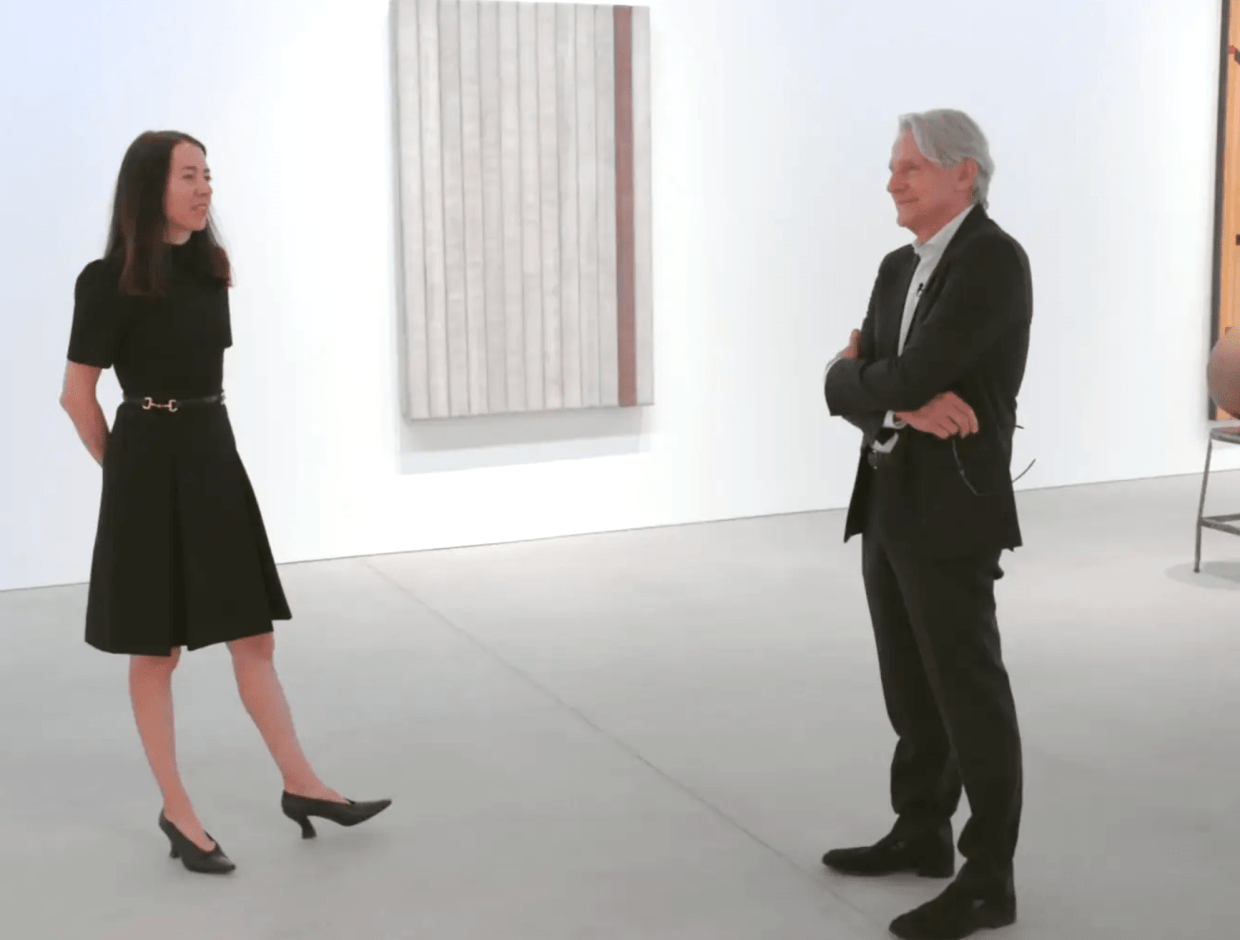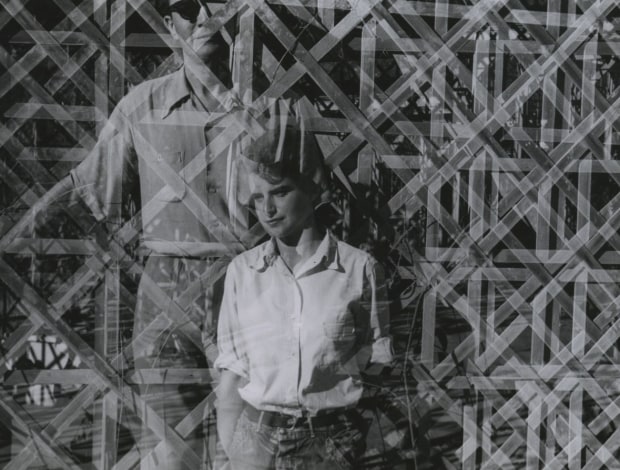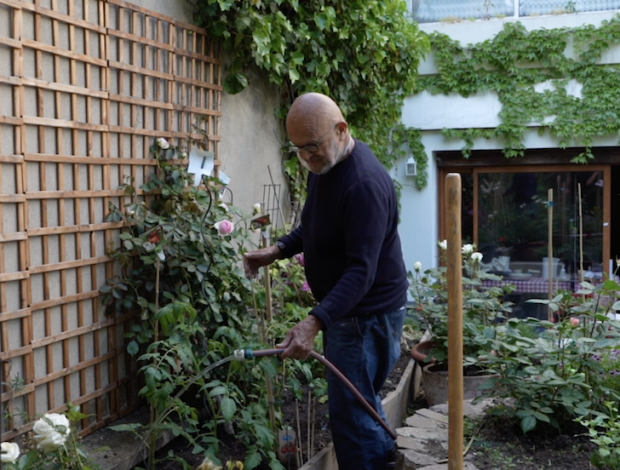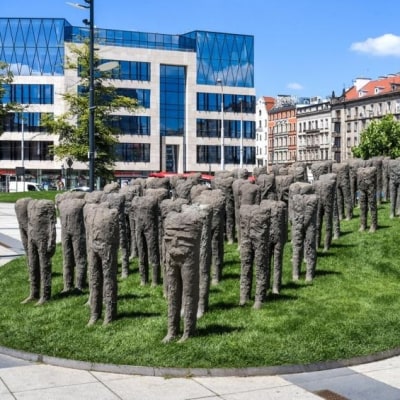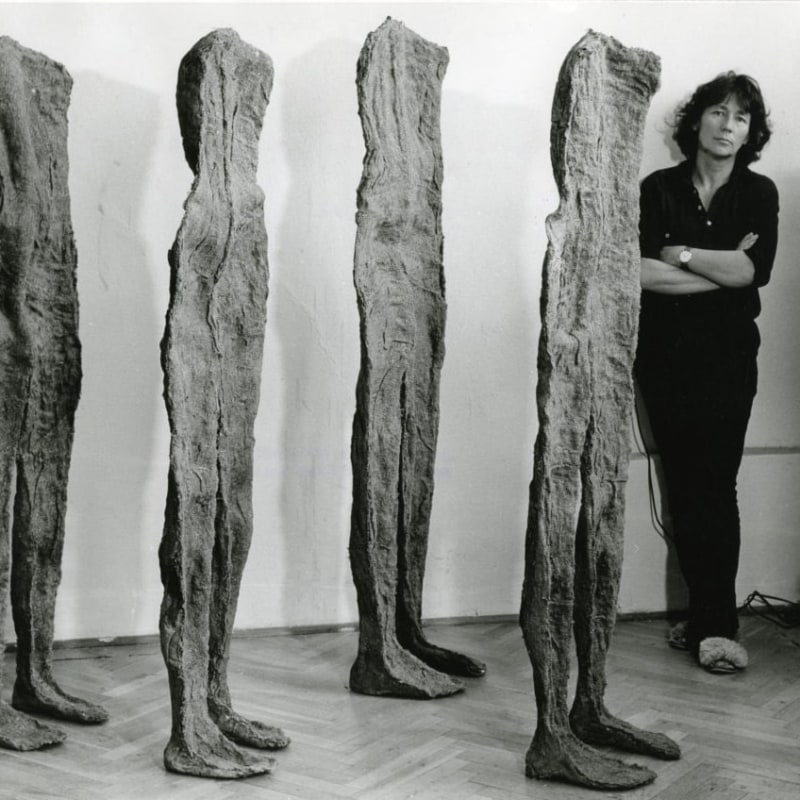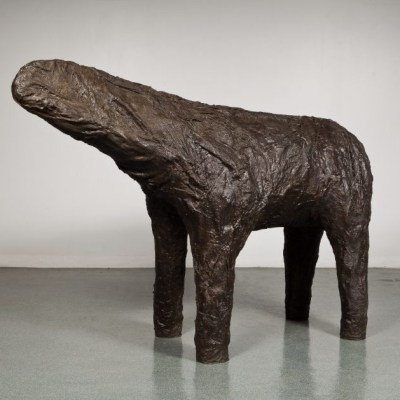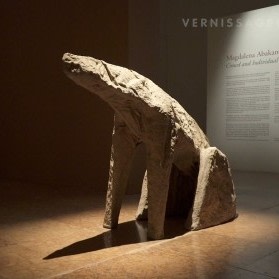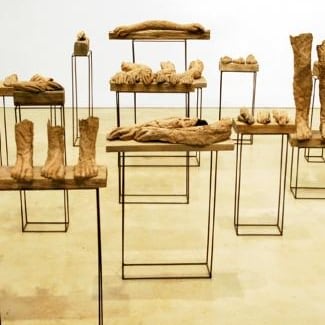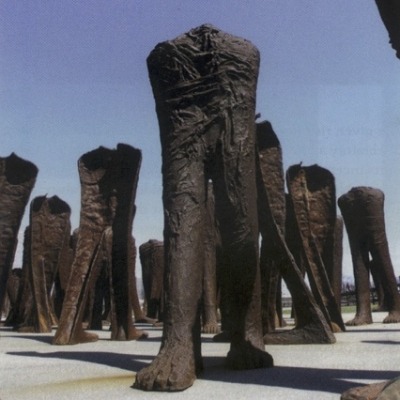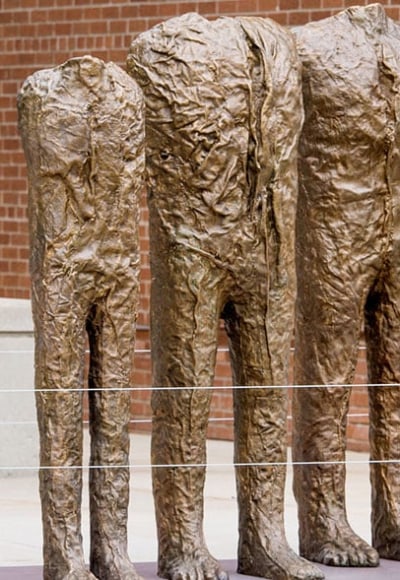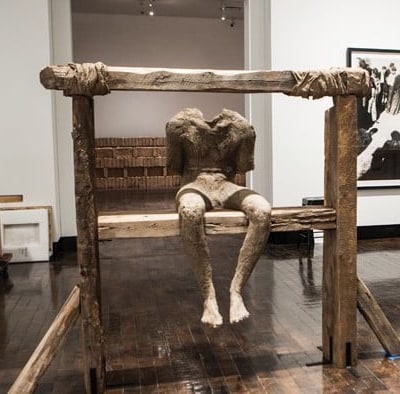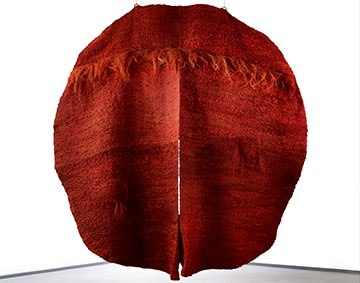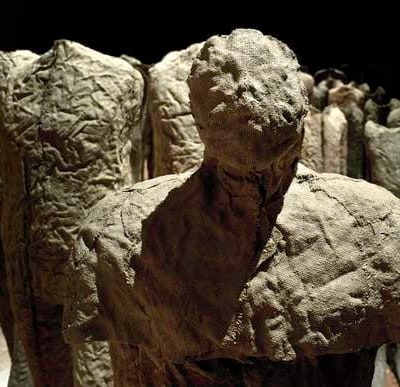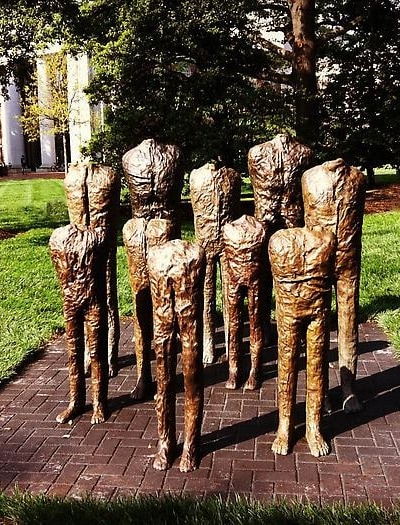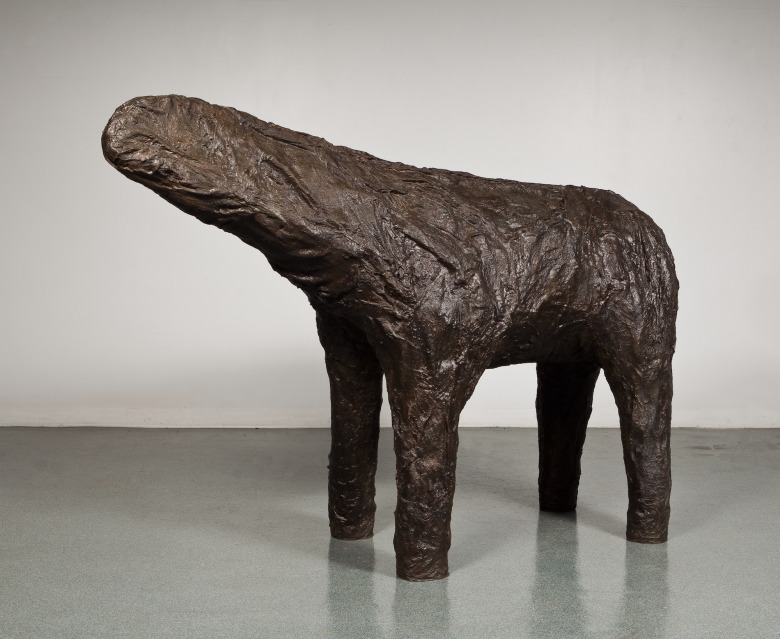
Magdalena Abakanowicz (1930–2017) was a Polish sculptor and fiber artist whose powerful portrayal of the figure explores the human condition, the relationship between man and nature, and social and political histories pertaining to her experiences in Soviet-occupied Poland. She is considered one of the most influential Polish artists of the postwar period. Abakanowicz’s earliest mature works—monumental, soft textile sculptures called Abakans—won her international recognition from behind the Iron Curtain. She later became known for her unique treatment of the human figure: often headless and modeled in found burlap or cast in bronze, each form made by hand.
Her work can be found in public collections internationally, including at the Art Institute of Chicago; Centre Georges Pompidou, Paris, France; Metropolitan Museum of Art, New York, New York; Musée d’Art Moderne de la Ville de Paris, France; Museum of Contemporary Art Chicago, Illinois; The Museum of Modern Art, New York, New York; National Gallery of Art, Washington, DC; National Museum of Contemporary Art, Seoul, South Korea; Nasher Sculpture Center, Dallas, Texas; Stedelijk Museum Amsterdam, Netherlands; the Storm King Art Center, Mountainville, New York, and many others.
Abakanowicz’s work was first presented by GRAY in the solo exhibition Recent Sculpture, 1990, and has been featured in several exhibitions since, including Modern and Contemporary Masters, 1992; Figuration, 1996; and Mutations, 2016.




